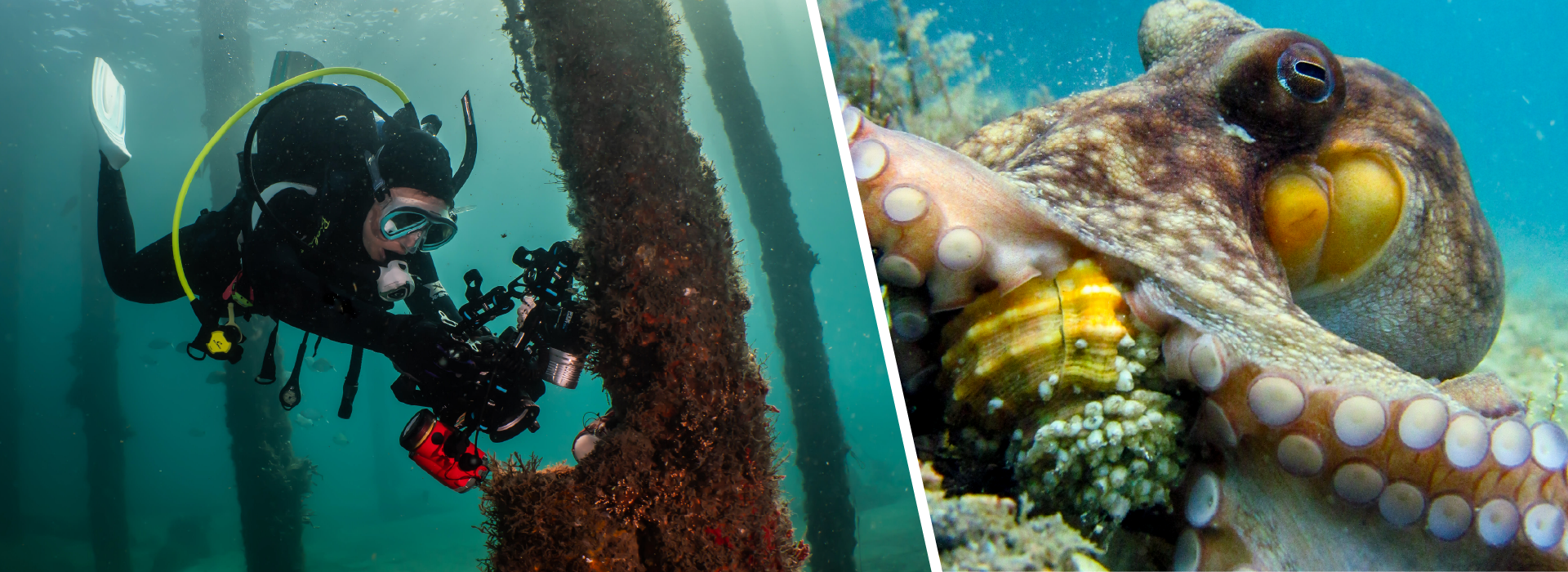12/20/2021
Underwater Neighbors
Researcher Reveals How Two Species of Octopus Share Living Space
By Bethany Augliere
From land, Blue Heron Bridge in Riviera Beach, Fla., appears no different than any other bridge. But lurking beneath the surface is a world filled with exotic sea life, like seahorses, sponges and octopuses.
“It’s one of the most renowned spots for scuba diving in South Florida, if not the country,” said marine biologist Chelsea Bennice, Ph.D., who has recently discovered how two species of octopus coexist under this bridge, sometimes within just a few feet on one another.
While coexistence has been studied in many species, it’s rarely been studied in cephalopods, a group of animals that includes octopuses, squids and cuttlefishes, said Bennice, an affiliate assistant scientist in the Charles E. Schmidt College of Science and assistant director of FAU’s ASCEND programs to Advance STEM-Community Engagement through Neuroscience Discovery, in the FAU Stiles-Nicolson Brain Institute on the John D. MacArthur campus in Jupiter, Fla.
Bennice and collaborators conducted the first long-term study to uncover how two species, Octopus vulgaris (common octopus) and Macrotritopus defilippi (Atlantic longarm octopus), occupy the same space by feeding on different prey items and at different times.
For this research, recently published in the Journal of Experimental Marine Biology and Ecology, she examined the octopuses' feeding behavior, diet and when they were active or inactive. Throughout the three-year study, she accrued more than 371 dive hours, sometimes following a single octopus for three hours to watch it eat. She also deployed a remote 24-hour underwater camera. “Before this study, little was known about the Atlantic longarm octopus, a shallow water species that I’ve found in just three feet of water,” Bennice said.
Results showed that the common octopus is primarily active at night, and ate shellfish like oysters, clams and scallops. They also preferred a harder seafloor, in rocks and rubble. The Atlantic longarm octopus is active during the day, preferred a sandy bottom and exclusively ate crustaceans, such as crabs and shrimps. The longarm’s diet surprised Bennice, adding, “I had no idea the Atlantic longarm octopus was such a specialist — eating primarily crabs.”
Additionally, eating at different times reduces interference competition for the two species, she said. “Our study also illustrates that both visual and tactile cues play a role during octopus’ foraging and feeding,” said Bennice, adding suckers on their arms touch and taste the environment as they look for food, and then they’ll blindly seize prey with their arms. “The behavioral ecology of octopuses is important for understanding the role these animals play in community structure and biodiversity of an ecosystem.”
If you would like more information, please contact us at dorcommunications@fau.edu.
